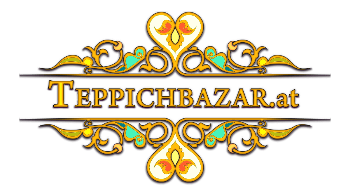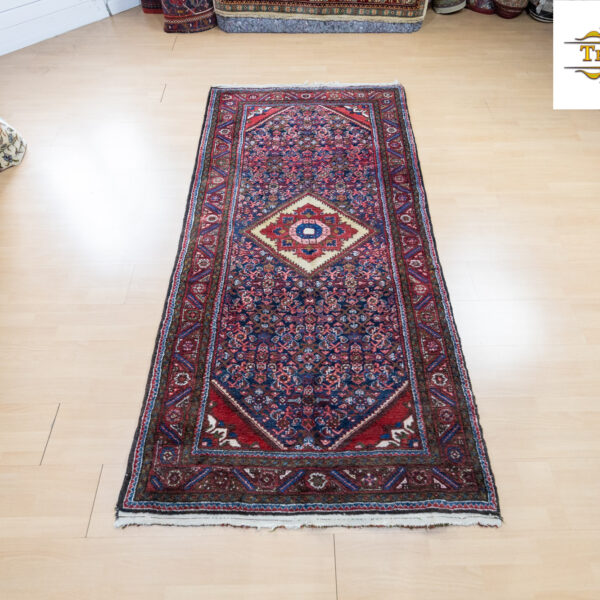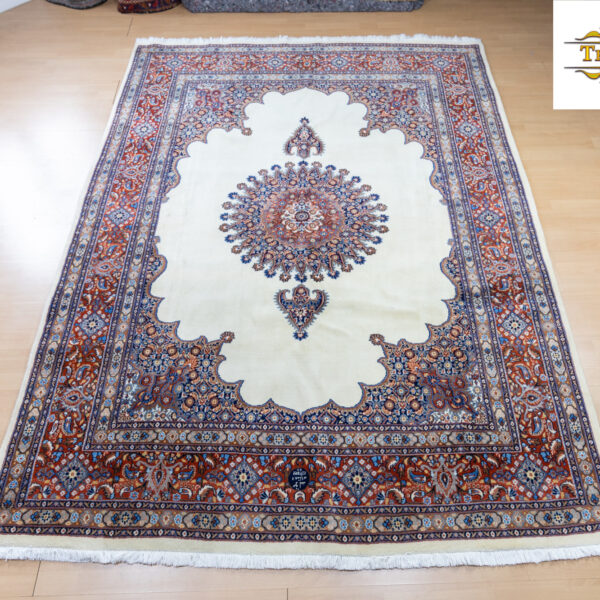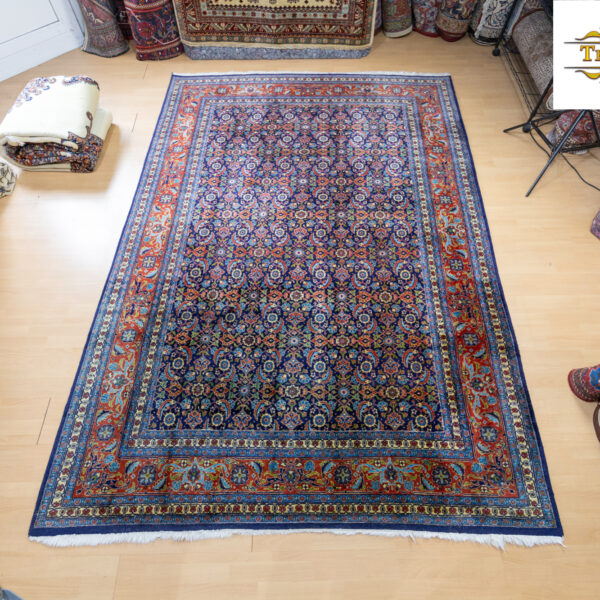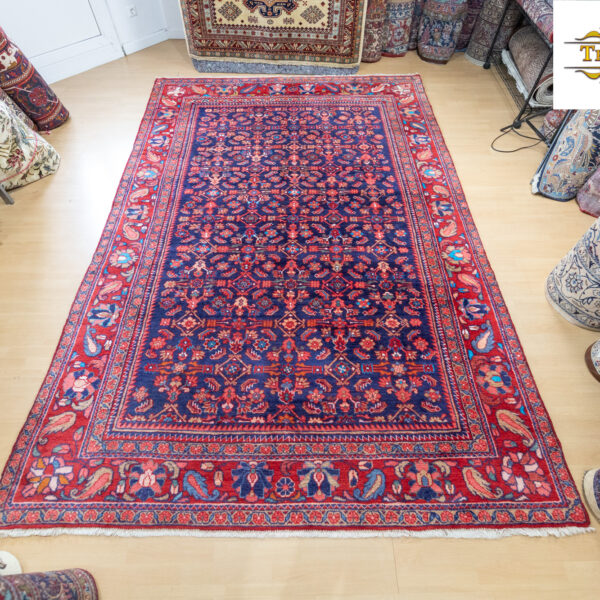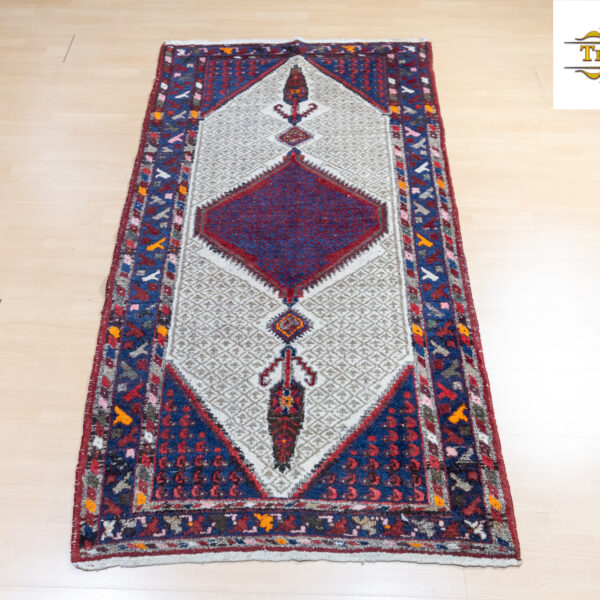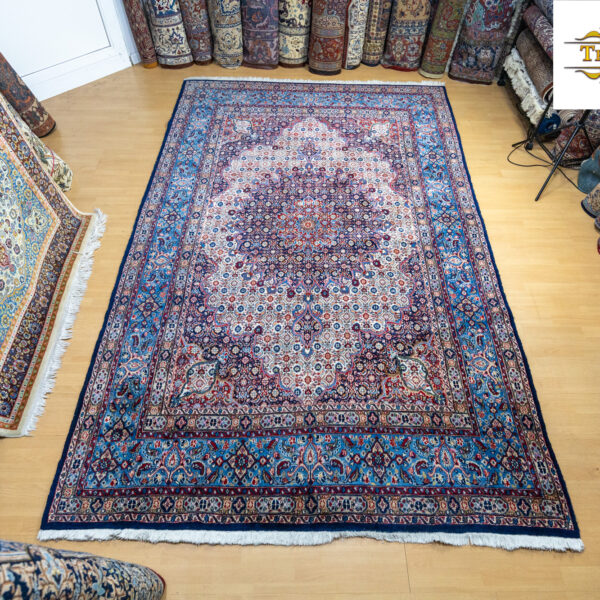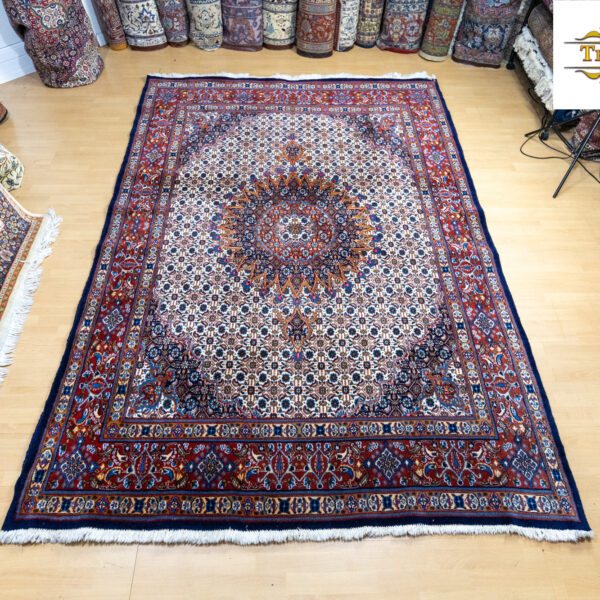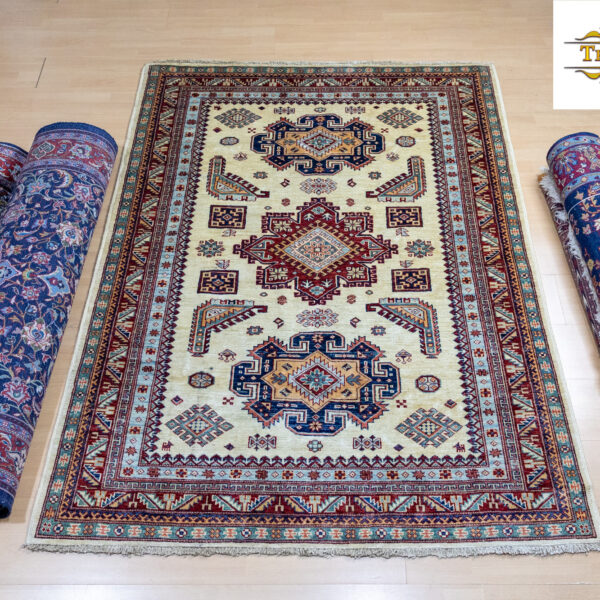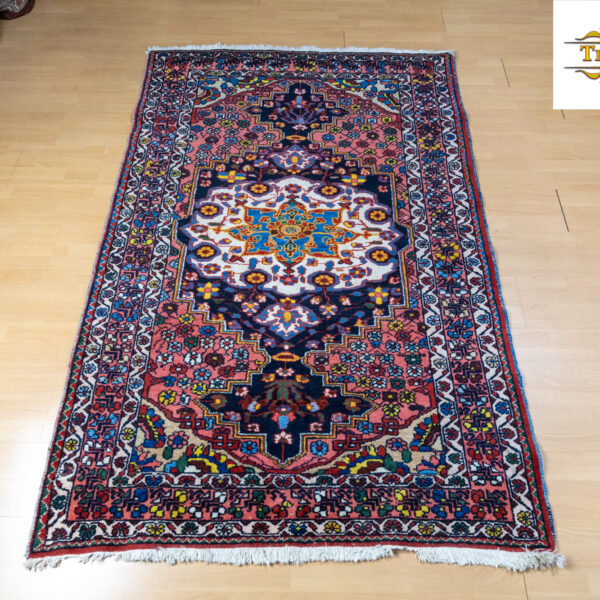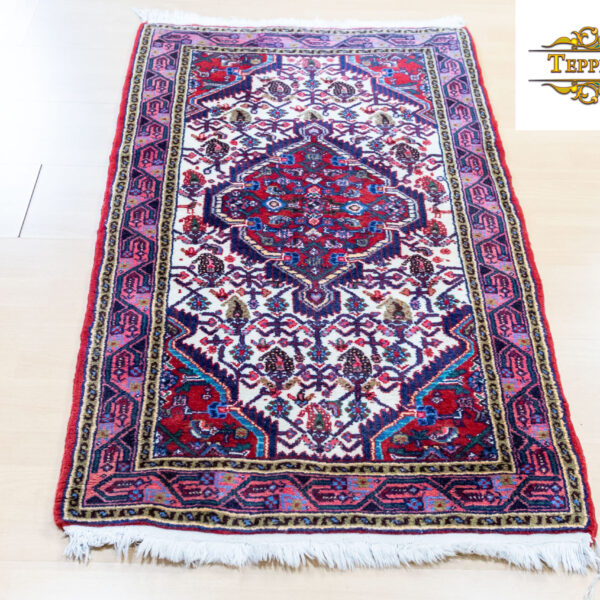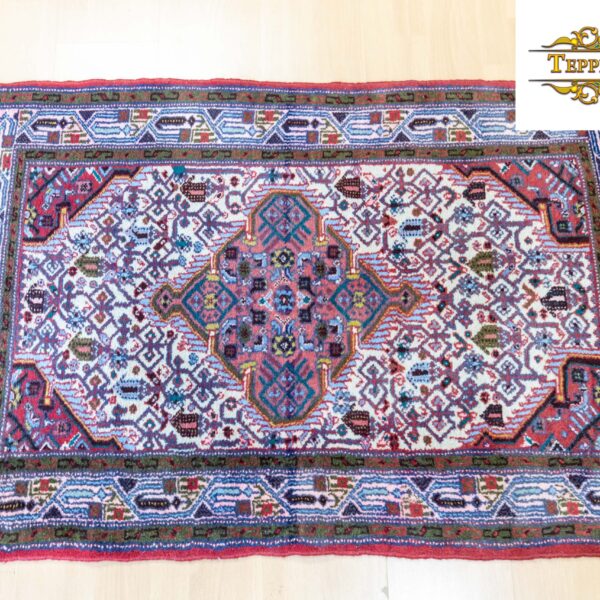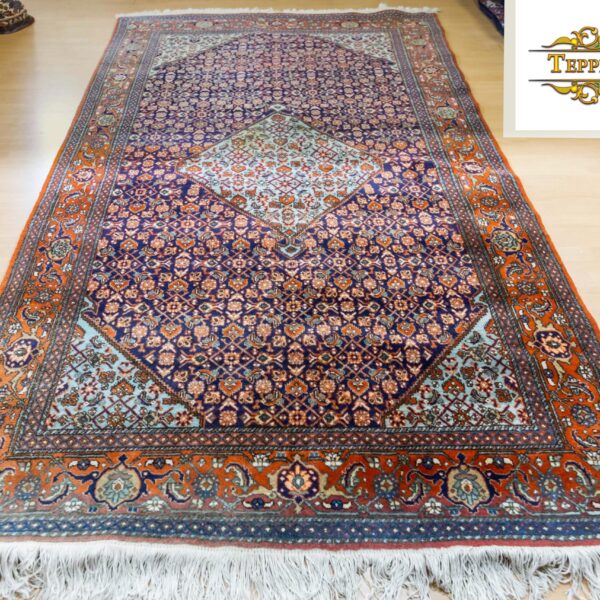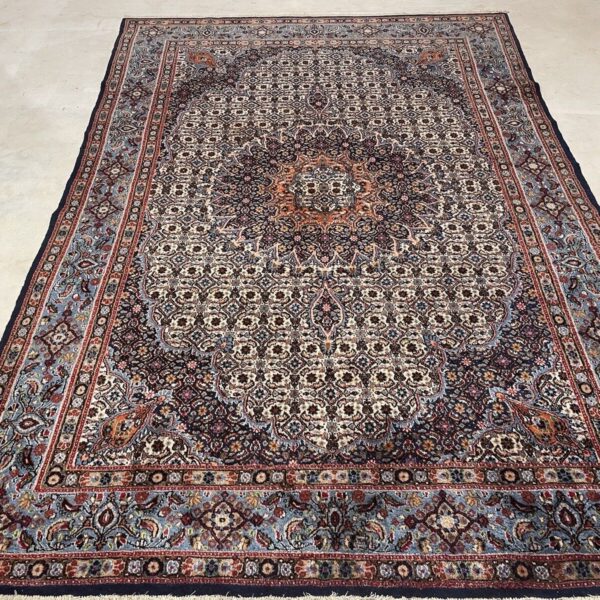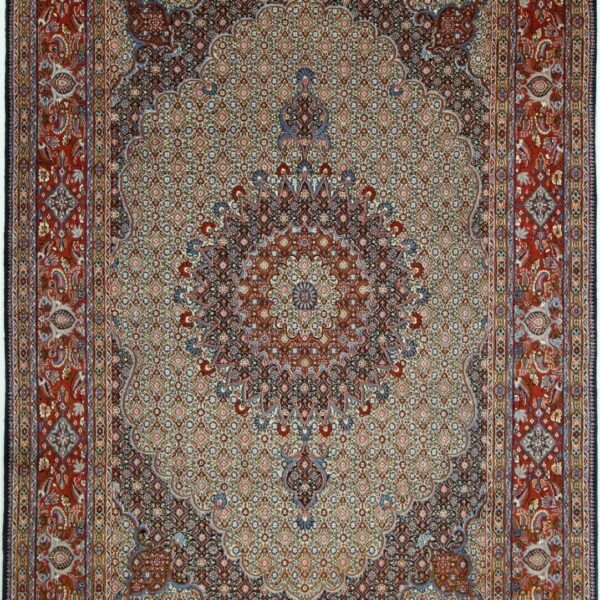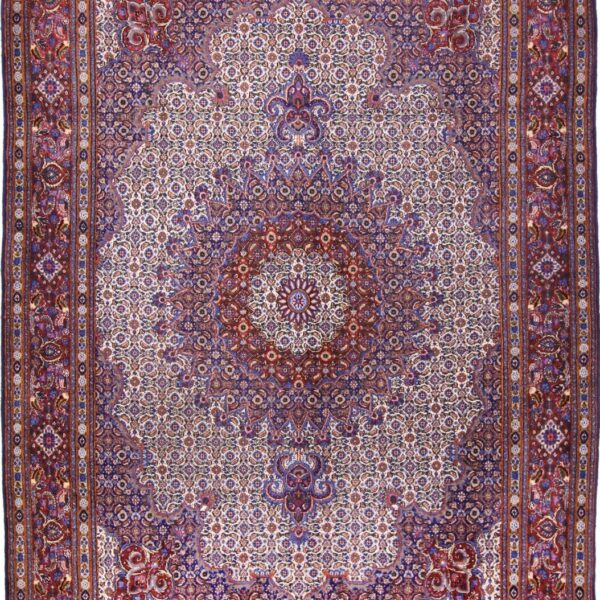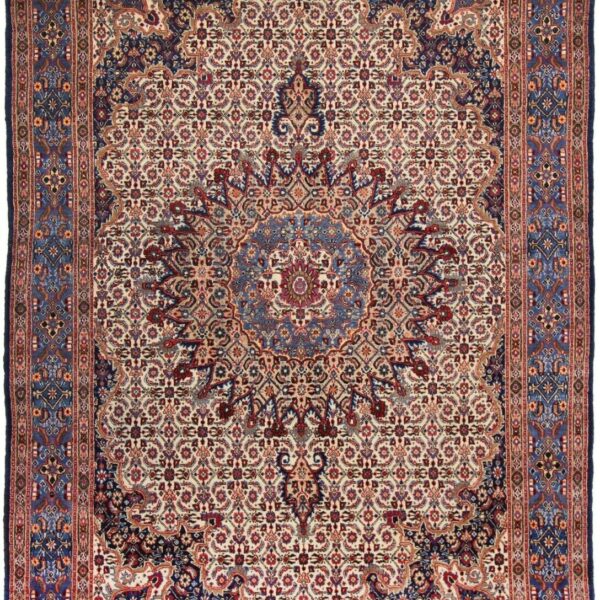Mold carpets
Mud (also: Mood or Moud, pronounced: [muːd], Persian مود) is a very ancient city in eastern Iran, in the south of Khorasan province. Mud was the provincial capital for about 20 years after the rule of the Mongol rulers Gurkāni until the beginning of the Pahlavi period (first half of the 400th century).
Mud is located in the administrative district of the same name. There are also two Mud villages in the south of Khorasan, namely “Chahkand-e Mud” (south of Mud) and “Mud-e Olya” (east of Mud).
The city is world famous for its saffron and carpet production.
Mud rugs are original rugs knotted and sold in the Birdshand region and the surrounding villages of Dorokhsh, Mud, Assiaban, Pirkhast, Darb Abbas, Derakht Tut, Seyyedan and Sirkouh. They are usually made from fine and rather soft wool and have narrow, fine and delicate patterns. Mud rugs are knotted with the senneh or djufti knot and can be recognized by the white warp threads that shine on the back.
Woven in deep shades of blue and red on a beige ground, the mud carpet is available in three variants. carpets with a central floral ornament; a round star medallion with attachments at the top and bottom, and an inner field usually broken by a curvilinear design with palmettes and stylized floral motifs as the main border. The inner field is complemented by angular corner gussets in the same light shades as the medallion.
Without the medallion and corners, the simplified mud carpet leaves the curvilinear pattern visible throughout the inner field and is therefore easy to maintain in terms of stains. In addition to the bazaar, mud rugs are also offered by manufacturers such as Etfa or Amini, who knit particularly beautiful rugs. These rugs are made of wool or cotton.
